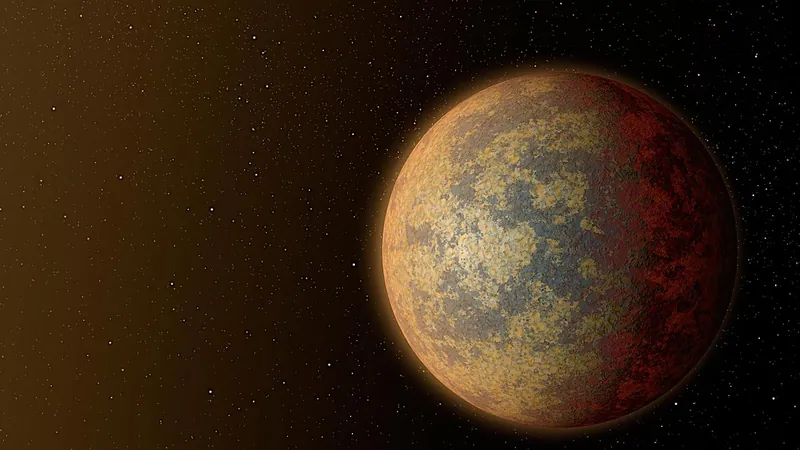
Ignan Earths: Exploring the Potential Habitability of Rocky Planets with Extreme Internal Heating
2025-01-11
Author: Mei
Introduction
Could a rocky planet be too hot to sustain life? In our Solar System, a key example of extreme internal heating is found on Io, one of Jupiter's moons. Io experiences a staggering heat flux of approximately 2 Watts per square meter, which is significantly higher than Earth’s mere 90 milliwatts.
The Tidal Venus Limit
The maximum limit of internal heating rates is referred to as the Tidal Venus Limit. This threshold is critical because it represents the point at which geothermal heat flux surpasses 300 W for a planet that has a mass equivalent to Earth. Between the extreme heating experienced by Io and this alarming Tidal Venus Limit, there exists a vast spectrum of internal heating rates. The effects of this range on planetary habitability have largely gone unexplored until now.
Investigations into Ignan Earths
Recent investigations into what scientists are calling "Ignan Earths" have yielded fascinating insights. These studies reveal that despite extreme internal heating, the mantle of such planets can remain largely solid. This solid state is essential because it allows for the formation of a stable and buoyant crust—an essential component for potential habitability.
Climate Modeling of Ignan Earths
Moreover, researchers have modeled the long-term climate of Ignan Earths by simulating the carbonate-silicate cycle within a vertical tectonic framework, a phenomenon expected to be prevalent on these planets. Their simulations considered various levels of internal heating and its impact on climate.
Findings and Implications
Findings indicate that Earth-mass planets with internal heating fluxes below 15 W could maintain average surface temperatures akin to those experienced by early Earth—typically below 30°C. Surprisingly, even worlds with significantly higher heat fluxes could still maintain surface temperatures well under the critical threshold of 100°C, which suggests that a considerable range of internal heating rates may still allow for habitability.
Conclusion
This research opens new avenues in the search for extraterrestrial life, suggesting that rocky planets, previously written off due to their high internal heating, may in fact harbor environments suitable for life. The implications of these findings could reshape our understanding of where life may exist beyond Earth, indicating that we should widen our search to include Ignan Earths in the vast cosmos.
Future Directions
Stay tuned for more groundbreaking revelations in astrobiology!


 Brasil (PT)
Brasil (PT)
 Canada (EN)
Canada (EN)
 Chile (ES)
Chile (ES)
 Česko (CS)
Česko (CS)
 대한민국 (KO)
대한민국 (KO)
 España (ES)
España (ES)
 France (FR)
France (FR)
 Hong Kong (EN)
Hong Kong (EN)
 Italia (IT)
Italia (IT)
 日本 (JA)
日本 (JA)
 Magyarország (HU)
Magyarország (HU)
 Norge (NO)
Norge (NO)
 Polska (PL)
Polska (PL)
 Schweiz (DE)
Schweiz (DE)
 Singapore (EN)
Singapore (EN)
 Sverige (SV)
Sverige (SV)
 Suomi (FI)
Suomi (FI)
 Türkiye (TR)
Türkiye (TR)
 الإمارات العربية المتحدة (AR)
الإمارات العربية المتحدة (AR)